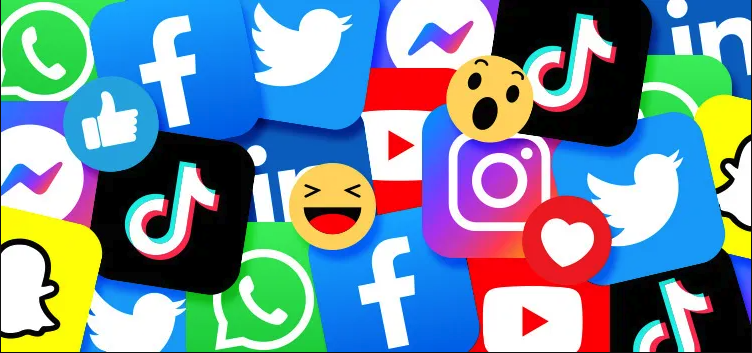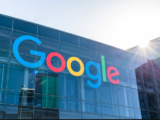The Big Picture –
By Glynn Wilson –
WASHINGTON, D.C. — Social media.
What is it? What good is it?
Does it help the public become more informed and enhance democracy?
Or does it just help spread fake news, misinformation and disinformation and help the spread of authoritarianism and fascism?
Is it a good way for lonely people to network with family and friends and stay connected?
Or does it just hurt peoples’ mental health?
It’s complicated.
There’s no denying the fact that social media platforms are in many ways the new entertainment medium of choice for billions of people around the world.
When the global population hit 8 billion people in 2022, about 3 billion reported having a Facebook account, owned by Meta.
That doesn’t mean everybody is keeping up with it all day long every day. Probably half the people who setup accounts mainly for public relations purposes probably don’t use it much anymore at all. Facebook usage has been level since 2016. Younger users seem to have moved on to other platforms.
About 2.4 billion people are reported to have used YouTube, now owned by Google. WhatsApp and Instagram had 2 billion registered users. Now China’s TikTok has 1.5 billion users, while Twitter(X) is stuck at about 600 million since Elon Musk took it over and in many ways screwed it up.
Most traditional news outlets and many new media organizations learned to use Twitter to promote their content and media stars, mainly network and cable television news celebrities. This is according to statistics reported on Wikipedia and other web sites that keep up with such things.
Compare this to the 9 million people who now pay for a digital subscription to the New York Times.
In the early days of Facebook, news aggregation sites like the Huffington Post were able to use it to build an audience and promote news content. But criticism of Facebook made the hacker/programmers who created and run it back off and block news content, promoting personal usage, the sharing of memes, pictures and videos that contain no external links taking people off the platform.
The monetization of Facebook with ads beginning after the company went public in 2012 has also inspired downplaying news from actual news reporters, and now emphasizes “user generated content,” although from what I see, most people seem to just share the same old memes, pics and videos that have been going around for years rather than highlighting new information. Some people are now called “digital creators” or “influencers.”
Whatever.
In a way, it’s no wonder people gravitated away from traditional media to social media, considering the boring nature of most newspaper news web sites with their fifth grade level AP style news stories, and the unreadability of most of those sites due to paywalls and popup ads. Clearly even political news junkies have gravitated to watching 24-hour cable news talk or to some extent talk radio, and the continuation of the talk and clips on social media.
It’s not about breaking factual news anymore. It’s about sensational clickbait that fires up a base of followers, right or left.
The New York Times on Monday carried a story about all the disinformation coming out of Russia especially as it relates to the war in Ukraine.
“Ever since its forces invaded two years ago, Russia has unleashed a torrent of disinformation to try to discredit Ukraine’s leader, Volodymyr Zelensky, and undermine the country’s support in the West.”
From Russia, Elaborate Tales of Fake Journalists
Many people seem disgruntled with what happens on Facebook and other platforms these days, prompting them to try other, newer programs.
I happen to be one of those early Facebook users for promoting factual news content who has been openly critical of Facebook. It was in my view the best of the platforms created. But it has gone steadily downhill over the past few years, especially starting with the fake news craze that hit during Donald Trump’s campaign for president in 2016.
The only luck I ever had with Twitter came in 2017, when Doug Jones of Alabama ran for the U.S. Senate and won against Ten Commandments Judge Roy Moore in the special election. Otherwise, I’ve never seen much happen on Twitter. But every news outlet in the land now uses it to find quotes for stories from politicians, who also used it more than Facebook because of the ability to have a following exceeding the FB maximum limit of 5,000 “friends.”
The Twitter news feed was a faster and more linear feed than Facebook as well, although Musk has turned the platform into a more right-wing biased place than those who created it.
I never saw much benefit from using Instagram mainly for sharing pictures, or Threads, another Meta program ostensibly designed to compete with Twitter. It never made any sense to me. Why not just compete with Twitter using Facebook and Instagram? If the news feed was actually designed for news, it could be helpful. Unfortunately, it is not anymore.
So some of my friends over the past few months have urged me to try other platforms, including a new one called Tribal. I really don’t have time for this, since the time I already spend on social media just takes up time I should be spending covering more actual news.
I understand that most big, corporate news outlets feel the need to be on every platform. I literally do not have the time, the resources or even the inclination to do this. But I decided to gave Tribal a try since it is not owned by Meta or the former creators of Twitter. I signed up and shared a few posts to see if it was any different or better than Facebook.
But it seems to me like it’s the same as all the rest. People are sharing the exact same partisan political memes, cat pics and short funny or sexy videos. How much time in the day or the week do we rally have for this crap?
I still read the New York Times and the Washington Post in the mornings like I’ve been doing online since 1995. I still share a few of the most important stories on Facebook in the morning, even though those links are mostly ignored by the bots, the algorithm and the public.
Many experts are now warning us that fake content on social media is likely to influence the election in 2024, and it is unclear if it’s even going to be possible anymore to counter the disinformation and lies by posting and sharing factual news and information.
I do not want to say here and now that all hope is lost, however, so I will keep trying.
There’s news out today showing that “outside” groups are planning to raise and spend $120 million to help with President Joe Biden’s reelection campaign, and his campaign spending is expected to hit $1 billion to $2 billion this year.
Outside Groups Pledge Over $1 Billion to Aid Biden’s Re-election Effort
This includes the The League of Conservation Voters, a leading organization concerned about climate change, that is among the biggest spenders on progressive causes.
Trump is struggling to raise funds, according to the same report, as Trump faces debilitating legal and financial judgements in several cases.
Republican groups are likely to spend big ahead of November as well, the Times reports, even though it is difficult to make direct comparisons between the Democratic organizations and their Republican counterparts since Democratic and progressive organizations often announce their spending plans in advance even before they raise the funds, which often come in from small donors.
“Republican groups that rely more on major donors tend not to telegraph their plans,” the Times reports.
There is one trend in all of this where I tend to find at least some hope. Prior to the election of 2020, Democrats tended to use Facebook pages and groups to argue with each other about minute policy differences. The one good think Trump did in 2020 was to unite Democrats in a movement to save democracy. It’s now clear that Biden is going to use this as the centerpiece of his campaign again in 2024, and for good reasons.
Some pollsters so far have been finding and highlighting small differences in support for Democrats among younger voters and minority groups. But it is hard to imagine that many young people, African Americans or Latinos will actually vote for Trump on Election Day, unless they are just swayed by the misinformation on certain talk radio or cable TV news channels, and their social media counterparts.
Democracy itself does still seem to be on the ballot in 2024. We will just have to wait and see how people actually vote come Tuesday, Nov. 5, 2024.
___
If you support truth in reporting with no paywall, and fearless writing with no popup ads or sponsored content, consider making a contribution today with GoFundMe or Patreon or PayPal.















FACEBOOK is important for everyone in Animal Rescue Work. That is an arena where responsible posting has saved many lives and informed users of the need
for financial support to rescues and sanctuaries. There is a certain amount of
care for animals showing up in Quora postings also.